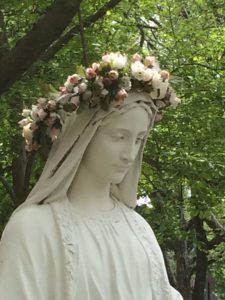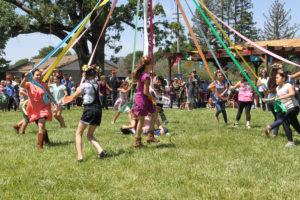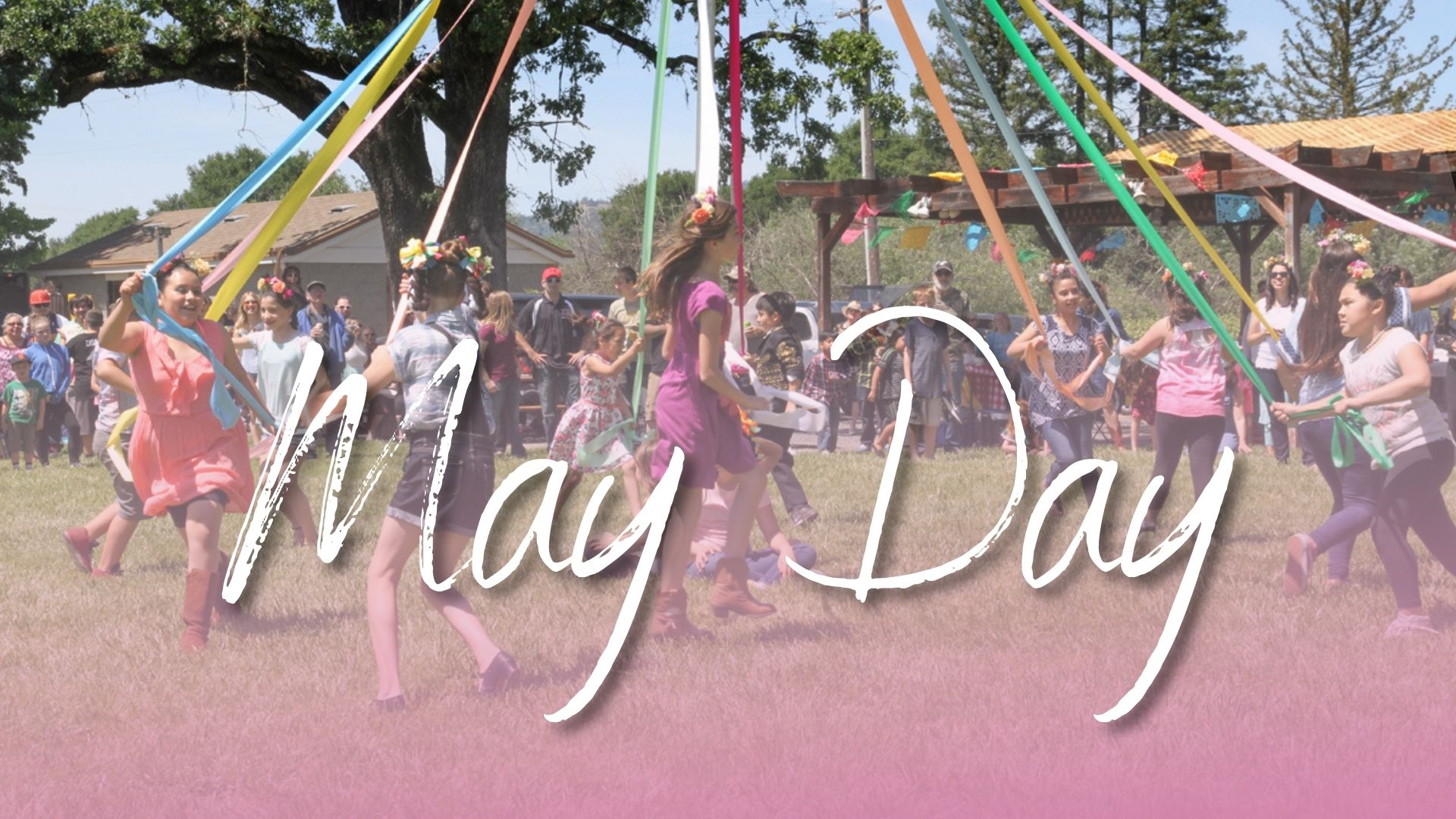May Day, usually observed on May 1st, or the first Monday of May, was an ancient public festival marking the first day of Summer. These days this traditional spring holiday is celebrated in many European cultures with festivities of dancing, singing, and cake.
Ancient Roman holidays such as Floralia, the festival of Flora, the Roman goddess of flowers, and the more hedonistic Maiuma, a festival celebrating Dionysus and Aphrodite were noted by the poet, Ovid in the first century AD. 
Later May festivals like Beltane (lucky fire), one of the four Gaelic seasonal festivals used bonfires to symbolically bless the cattle. Walpurgis Night, a Germanic celebration of the canonization of St. Walpurgis and her ability to ward off evil, saw revelers dress as witches and demons, set off fireworks, light bonfires, dance and play loud music, which was said to drive the witches and winter spirits away.
 Since the 18th century Roman Catholics have honored Mary, the mother of Jesus, as “Queen of the May” during May devotions, and crowning ceremonies. The May 1st feast day of Mary’s husband, St. Joseph, a patron saint of workers, is a counterpoint to the communist celebration of International Workers Day on the same date. That May Day labor celebration remembers the 1886 Chicago Haymarket Riot when a protest against anti-labor police brutality turned violent. It became a day for workers to demonstrate for fair treatment and an 8-hour workday.
Since the 18th century Roman Catholics have honored Mary, the mother of Jesus, as “Queen of the May” during May devotions, and crowning ceremonies. The May 1st feast day of Mary’s husband, St. Joseph, a patron saint of workers, is a counterpoint to the communist celebration of International Workers Day on the same date. That May Day labor celebration remembers the 1886 Chicago Haymarket Riot when a protest against anti-labor police brutality turned violent. It became a day for workers to demonstrate for fair treatment and an 8-hour workday.
 The best-known modern May Day traditions, observed both in Europe and North America, include dancing around the maypole and crowning the Queen of May. The Maypole and its origins in fertility rites were discouraged by our puritan ancestors and are not as popular in the US.
The best-known modern May Day traditions, observed both in Europe and North America, include dancing around the maypole and crowning the Queen of May. The Maypole and its origins in fertility rites were discouraged by our puritan ancestors and are not as popular in the US.

